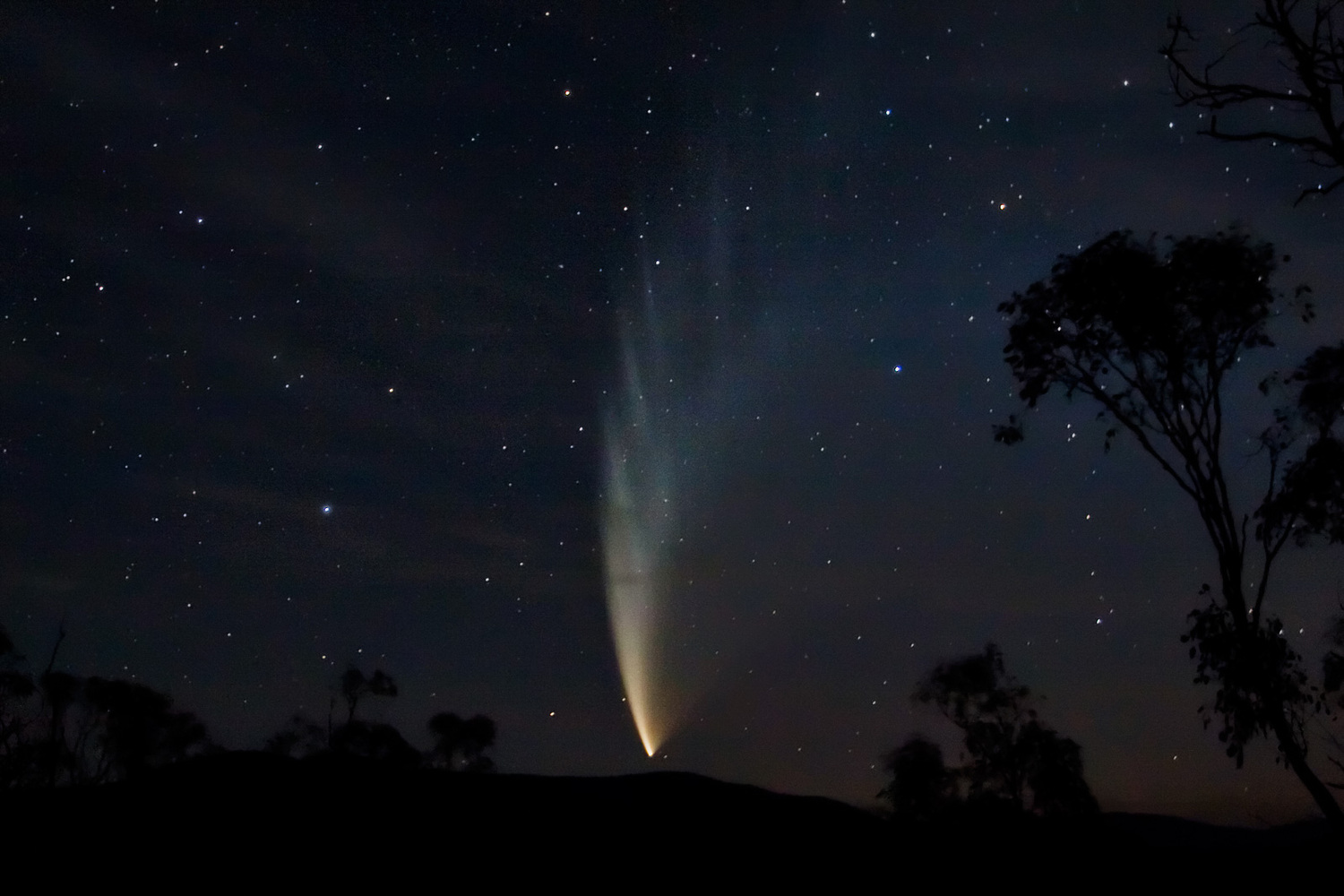How are comets like cats?
Interview with
Earlier in the year, astronomers were making predictions that a very bright  comet will be visible in the night sky in November and December. But over the past few months, it hasn't been brightening quite as much as some people were hoping. Many people are now rather doubtful about how spectacular it might be. But why are comets such unpredictable objects? To find out, Dominic Ford caught up with Robert Massey from the Royal Astronomical Society
comet will be visible in the night sky in November and December. But over the past few months, it hasn't been brightening quite as much as some people were hoping. Many people are now rather doubtful about how spectacular it might be. But why are comets such unpredictable objects? To find out, Dominic Ford caught up with Robert Massey from the Royal Astronomical Society
Robert - It's contentious. The object that we were looking forward to at the end of the year I think still are is comet ISON. It was discovered by robotic network of telescopes in Russia and it's been named after that, although to be fair, there are actually a couple of scientists who probably need to be credited for it as well. But this object was thought, because it was coming very close to the sun and also, was very, very active a long way from the sun, the supposition was, that when it got close into the inner solar system, it would become very bright and certainly once it passed by the sun and was heading out in space again.
Now, there is some debate as to whether that's still likely to happen because the activity levels that was on the comet haven't lived up to expectations. Now, this is actually nothing unusual with comets. Quite often, they can be active when they're far out particularly if they haven't come in to the solar system before and that looks like it might be the case for ISON, and then the activity can fall off a bit and that seems to be happening here. So, it may not be quite the object that people were expecting and there's always been an unfortunate tendency for these things to be hyped. But that said, it can still be quite a nice comet as these things go. It could still be visible to the naked eye late in the year, particularly in the northern hemisphere. So, we in the UK might get a really good view of it in the last couple of weeks in the year. But we'll just have to wait and see. It's one of those things where comets are a bit like cats. The description is that they have tails and they do exactly what they want.
Dominic - What does that tell us about the structure of the object?
Robert - The difficulty in understanding their activity is that they can have a variety of materials. I mean, they have ices, mostly frozen water and other gases as well inside. But when they get close to the sun, that stuff heats up and it goes straight from being ice to gas because you need some kind of atmospheric pressure for a material to become liquid, so it doesn't go through that phase. Now, the determining factor is really, how much of it is exposed. If the comet has quite a thick rocky crust or debris crust or dusty crust then it's much harder for the heat of the sun to reach inside and then also, there are fewer vents for the material to come out. If that's thinner then you'd expect more of the material inside to come out. So probably, those factors, the exact proportion of water ice and all those things determine how active the comet is likely to be.
Dominic - From memory, when ISON makes its closest approach to the sun in November, it's going to be actually incredibly close, that will be a very extreme environment that those ices will be exposed to.
Robert - Well, ISON is going to go within about 1.1 million kilometres from the sun's surface. Given that the sun is 1.3 million kilometres across, that's really a very close approach indeed. Now, there's again, a lot of debate about exactly what will happen because there is another object, comet Lovejoy that made a similar approach a couple of years ago and turned out to be quite robust. It actually came though it quite well.
There was a paper by the astronomer Royal of Scotland, John Brown on this around the same time and he pointed out that you have to consider that although it's a hot environment being that close to the sun quite clearly, there isn't much in the way of the solar atmosphere at that point so objects can pass through it. The ones that plunge directly onto the sun's surface clearly, are going to be destroyed, but further out, it's a lot harder to tell. So, I think the jury is out on whether it will survive. If it does survive, it may turn out to be a very nice comet indeed we just don't know.









Comments
Add a comment